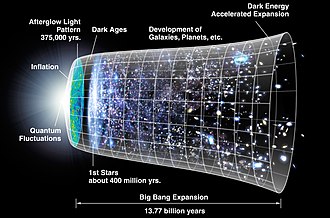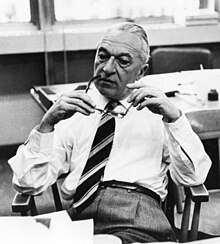The History of Science Portal
The history of science covers the development of science from ancient times to the present. It encompasses all three major branches of science: natural, social, and formal. Protoscience, early sciences, and natural philosophies such as alchemy and astrology during the Bronze Age, Iron Age, classical antiquity, and the Middle Ages declined during the early modern period after the establishment of formal disciplines of science in the Age of Enlightenment.
Science's earliest roots can be traced to Ancient Egypt and Mesopotamia around 3000 to 1200 BCE. These civilizations' contributions to mathematics, astronomy, and medicine influenced later Greek natural philosophy of classical antiquity, wherein formal attempts were made to provide explanations of events in the physical world based on natural causes. After the fall of the Western Roman Empire, knowledge of Greek conceptions of the world deteriorated in Latin-speaking Western Europe during the early centuries (400 to 1000 CE) of the Middle Ages, but continued to thrive in the Greek-speaking Byzantine Empire. Aided by translations of Greek texts, the Hellenistic worldview was preserved and absorbed into the Arabic-speaking Muslim world during the Islamic Golden Age. The recovery and assimilation of Greek works and Islamic inquiries into Western Europe from the 10th to 13th century revived the learning of natural philosophy in the West. Traditions of early science were also developed in ancient India and separately in ancient China, the Chinese model having influenced Vietnam, Korea and Japan before Western exploration. Among the Pre-Columbian peoples of Mesoamerica, the Zapotec civilization established their first known traditions of astronomy and mathematics for producing calendars, followed by other civilizations such as the Maya.
Natural philosophy was transformed during the Scientific Revolution in 16th- to 17th-century Europe, as new ideas and discoveries departed from previous Greek conceptions and traditions. The New Science that emerged was more mechanistic in its worldview, more integrated with mathematics, and more reliable and open as its knowledge was based on a newly defined scientific method. More "revolutions" in subsequent centuries soon followed. The chemical revolution of the 18th century, for instance, introduced new quantitative methods and measurements for chemistry. In the 19th century, new perspectives regarding the conservation of energy, age of Earth, and evolution came into focus. And in the 20th century, new discoveries in genetics and physics laid the foundations for new sub disciplines such as molecular biology and particle physics. Moreover, industrial and military concerns as well as the increasing complexity of new research endeavors ushered in the era of "big science," particularly after World War II. (Full article...)
Selected article -

Physical cosmology is a branch of cosmology concerned with the study of cosmological models. A cosmological model, or simply cosmology, provides a description of the largest-scale structures and dynamics of the universe and allows study of fundamental questions about its origin, structure, evolution, and ultimate fate. Cosmology as a science originated with the Copernican principle, which implies that celestial bodies obey identical physical laws to those on Earth, and Newtonian mechanics, which first allowed those physical laws to be understood.
Physical cosmology, as it is now understood, began with the development in 1915 of Albert Einstein's general theory of relativity, followed by major observational discoveries in the 1920s: first, Edwin Hubble discovered that the universe contains a huge number of external galaxies beyond the Milky Way; then, work by Vesto Slipher and others showed that the universe is expanding. These advances made it possible to speculate about the origin of the universe, and allowed the establishment of the Big Bang theory, by Georges Lemaître, as the leading cosmological model. A few researchers still advocate a handful of alternative cosmologies; however, most cosmologists agree that the Big Bang theory best explains the observations. (Full article...)Selected image

Ernst Haeckel, the great populariser of Charles Darwin's theory of evolution, was the first to use a literal tree of life to express evolutionary relationships based on common descent. This version comes from his 1866 General Morphology; several different versions, some highly elaborate and artistic, are found in other Haeckel works. The icon of a tree of life has been used widely since that time; some modern versions include a tangled root system to represent the effects of horizontal gene transfer and symbiogenesis early in evolutionary history.
Did you know
...that Einstein's famous letter to FDR about the possibility of an atomic bomb was actually written by Leó Szilárd?
...that geology was transformed in the latter part of the 20th century after widespread acceptance of plate tectonics?
...that the idea of biological evolution dates to the ancient world?
Selected Biography -

Bruno Benedetto Rossi (/ˈrɒsi/; Italian: [ˈrossi]; 13 April 1905 – 21 November 1993) was an Italian experimental physicist. He made major contributions to particle physics and the study of cosmic rays. A 1927 graduate of the University of Bologna, he became interested in cosmic rays. To study them, he invented an improved electronic coincidence circuit, and travelled to Eritrea to conduct experiments that showed that cosmic ray intensity from the West was significantly larger than that from the East.
Forced to emigrate in October 1938 due to the Italian racial laws, Rossi moved to Denmark, where he worked with Niels Bohr. He then moved to Britain, where he worked with Patrick Blackett at the University of Manchester. Finally he went to the United States, where he worked with Enrico Fermi at the University of Chicago, and later at Cornell University. Rossi stayed in the United States, and became an American Citizen. (Full article...)Selected anniversaries
- 1722 - Birth of Petrus Camper, Dutch anatomist (d. 1789)
- 1752 - Birth of Johann Friedrich Blumenbach, German anthropologist (d. 1840)
- 1871 - Death of John Herschel, British mathematician and astronomer (b. 1792)
- 1881 - Birth of Theodore von Kármán, Hungarian physicist (d. 1963)
- 1887 - Death of Jean Baptiste Boussingault, French chemist (b. 1802)
- 1891 - Death of A. E. Becquerel, French physicist (b. 1820)
- 1916 - Death of Karl Schwarzschild, German astronomer and physicist (b. 1873)
- 1918 - Birth of Richard Feynman, American physicist and Nobel Prize laureate (d. 1988)
- 1924 - Birth of Antony Hewish, English radio astronomer and Nobel Prize laureate
- 1930 - Birth of Edsger Dijkstra, Dutch computer scientists (d. 2002)
- 1934 - Death of Orest Khvolson, Russian physicist (b. 1852)
- 1960 - Death of John D. Rockefeller, Jr., American philanthropist and science patron (b. 1874)
- 1963 - Death of Herbert Spencer Gasser, American physiologist and Nobel Prize laureate (b. 1888)
- 1981 - Death of Odd Hassel, Norwegian chemist and Nobel Prize laureate (b. 1897)
- 1987 - The first heart-lung transplant takes place.
- 1995 - In New York City, more than 170 countries decide to extend the Nuclear Nonproliferation Treaty indefinitely and without conditions.
- 1997 - IBM's Deep Blue chess-playing supercomputer defeats Garry Kasparov in the last game of the rematch, becoming the first computer to beat a world-champion chess player.
- 1998 - Nuclear testing: In the Rajasthan Desert, India conducts its first underground nuclear tests and prompting its rival neighbor Pakistan to test its own nuclear weapons.
Related portals
Topics
General images
Subcategories
Things you can do
Help out by participating in the History of Science Wikiproject (which also coordinates the histories of medicine, technology and philosophy of science) or join the discussion.
Associated Wikimedia
The following Wikimedia Foundation sister projects provide more on this subject:
-
Commons
Free media repository -
Wikibooks
Free textbooks and manuals -
Wikidata
Free knowledge base -
Wikinews
Free-content news -
Wikiquote
Collection of quotations -
Wikisource
Free-content library -
Wikiversity
Free learning tools -
Wiktionary
Dictionary and thesaurus







































































